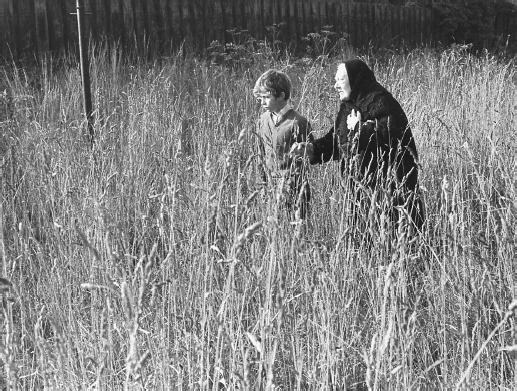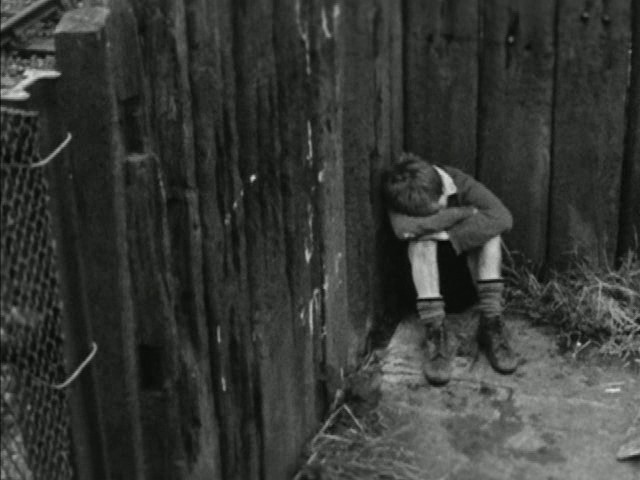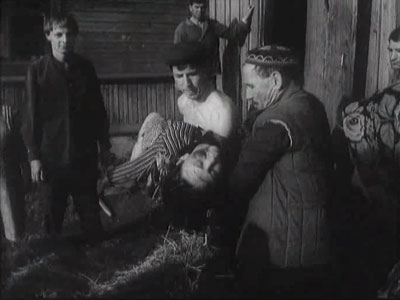I was lucky enough to attend the two-night retrospective of Varese at Lincoln Center, where they played everything he ever published and then some, including a couple new pieces I’d never heard before, unpublished works recently finished by his assistant Chou Wen-chung. Varese was extremely parsimonious in what he published–Webern’s surviving works are almost twice as long–and he seems to have lost ten years in the 30s to some mysterious project that he abandoned.
I think I first heard of Varese via Frank Zappa’s worship of him, but because I didn’t like Zappa, I didn’t check out Varese until years later, when I found that he was far better than Zappa. (I’ve mellowed a bit on Zappa, but Zappa’s talents were mainly writing tunes and technical skill, while Varese possessed an ear for organizing blocks of sound that Zappa utterly lacked. Hell, he seemed to lack any sense of texture at all, judging by his love of the Synclavier. See Ian Penman’s endlessly amusing Don’t Do That On Stage Anymore for further reference.)
Varese also harder to listen to; I was exhausted by the end of each night because Varese really did compress a lot into each piece. And while he doesn’t have many string parts, he is very fond of brass, percussion, and sirens. The line from him to Messiaen, Xenakis, and Stockhausen, as well as the early electronic composers, is pretty evident. (And, more contentiously, I hear his influence in freer jazz improvisers and composers like Cecil Taylor.) He was one of the first to sublimate tonality (or atonality) to pure sound (Varese called it “organized sound,” in fact). He wasn’t the only one: Henry Cowell and George Antheil, among others (Ives and Ornstein?), were doing similar things, so it wasn’t as though Varese’s innovations sprung out of a vacuum. Check out Cowell’s “The Banshee,” from 1925:
Henry Cowell: The Banshee (1925)
But Varese, as far as I know, was the first to construct large-scale orchestral works that hung together in such a visceral way. Even if I’m wrong, his work is still outstanding.
For logistical reasons they couldn’t play the pieces chronologically, which is too bad because they do show continual development. So here’s my amateur’s guide to his small oeuvre:
- Un grand sommeil noir, song to a text by Paul Verlaine for voice and piano (1906): A modest, impressionistic, and very French song, mostly notable for being a total downer.
- Amériques for large orchestra (1918–1921; revised 1927): An orchestral monster for over a hundred instruments, including plenty of percussion. Still a fair amount of musical material here, which clearly influenced by Stravinsky, as it sounds like The Rite of Spring is about to break out at several points. But the sirens and general assault-level are beyond anything before it. Still, for all its bulk and force, there’s a sense that its an episodic, journeyman work, that Varese hasn’t quite managed to tame the forces he’s unleashing or hold them together at the scale he’s working at (25 minutes).
- Offrandes for soprano and chamber orchestra (poems by Vicente Huidobro and José Juan Tablada)(1921): Less aggressive but more concentrated than Ameriques, as the accompaniment is often more along the lines of sound effects than music per se. The lyrics of the second poem are quite strange: “In the sky there is a sign / Oleo margarine.”
- Hyperprism for wind and percussion(1922–1923): Melody finally recedes, as percussion and siren dominate and a few brief, lone melody lines (more repeated cells than actual melodies) are usually buried in massed, blaring winds. I’m very fond of this one, and it’s not a bad place to start.
- Octandre for seven wind instruments and double bass (1923): Except for the lack of percussion, the materials are similar to Hyperprism, but more sparse, with lots of sudden, jarring shifts in tempo and texture. (I have to wonder if the tempo markings of each of the three parts are meant to be humorous, since they’re all of a piece.) The absence of percussion means that the pitched instruments take on more responsibility for pure texture, which sets the scene for…
- Intégrales for wind and percussion (1924–1925): The oboe’s little melodic cell at the beginning recurs throughout, but there’s very little that could be called development. I see the piece as an attempt to negate whatever remains of melody by turning it into a percussive effect in itself. The endless repetitions of the little cells become numbing, especially when interrupted by crashing percussion and blaring winds, until they too are sound effects. I once saw Alarm Will Sound perform this while sitting two feet from the brass. Powerful but wearying.
- Arcana for large orchestra (1925–1927): My favorite and I think his greatest achievement. Superior to Ameriques in every way save number of instruments. Everything Varese had done up to now is synthesized successfully for a large orchestra. There seems to be more base melodic material, but it’s less idiomatic and doesn’t dominate the textures, so everything is in balance. Recorded by, among others, Leonard Bernstein and Jean Martinon! This is the pretty good Chailly version:
- Ionisation for 13 percussion players (1929–1931): Another synthesis, this time just using percussion players (plus siren of course). Impossible not to think of Xenakis’ percussion pieces while hearing this, but Varese is more straightforwardly rhythmic and organized, and there is enough pitched percussion that the piece is considerably closer to Arcana than it might initially appear. Ironically, it’s less daunting and easier to follow.
- Ecuatorial for bass voice (or unison male chorus), brass, organ, percussion and theremins (revised for ondes-martenot) (text by Francisco Ximénez) (1932–1934): the organ and theremins (or ondes martinots) introduce new sonorities, but this one has always left me a little baffled. The caterwauling bass voice doesn’t quite mesh with the textures, and so the music seems like a sequence of moods rather than a unified piece. But in light of his later work, this was probably the intent. I just don’t find it as successful.
- Density 21.5 for solo flute (1936): Just one flute. A lot less extreme than Xenakis and Lachenmann’s solo compositions, it’s structured very carefully and formally, but beyond the ability of me to “hear” in passing. Still sounds nice though.
- Tuning Up for orchestra (sketched 1946; completed by Chou Wen-Chung, 1998): It doesn’t quite sound like tuning up; if you want that, listen to Schnittke’s first symphony. This piece is only five minutes and utilizes lots of “tuning up” sounds and snatches of famous pieces, but Varese structures them so fluently that it’s obviously composed, noise and all. Maybe not a major work but enjoyable and revealing of his skill to toss off something that would be beyond the ability of a lot of composers.
- Étude pour espace for soprano solo, chorus, 2 pianos and percussion (1947; orchestrated and arranged by Chou Wen-chung for wind instruments and percussion for spatialized live performance, 2009) (texts by Kenneth Patchen, José Juan Tablada and St. John of the Cross): a new one! Unfortunately, Alice Tully Hall does not seem to be made for electronic performance, at least where I was sitting, and so I couldn’t make a lot of sense of this one, other than to say that it lacked the sonic integrity that all of Varese’s other work possesses. I’ll have to hear it on CD, I imagine, to judge better. This is apparently all that was salvaged of Varese’s mysterious Espaces project of the 1930s that never came to fruition.
- Dance for Burgess for chamber ensemble (1949): I knew Burgess Meredith was the leading socialite of Hollywood and directed Ulysses in Nighttown (starring Zero Mostel as Bloom!), but I’m still surprised that he hung out with Varese. Anyway, this is a wacky two-minute piece with a brief jazz dance rhythm alternating with typical Varese craziness. Weird.
- Déserts for wind, percussion and electronic tape (1950–1954): the last big piece, alternating sparser chamber and choral textures with “interpolations” of violent electronic and electroacoustic noise. They never play simultaneously, probably for reasons of sound balance. It’s explicitly episodic and so doesn’t reach for the massed intensity of Arcana. The increased use of space is ghostly; the sudden eruptions of volume seem to be gestures of struggle against, well, death. Just my reading, but there’s always been something morbid about this one to me.
- La procession de verges for electronic tape (soundtrack for Around and About Joan Mirò, directed by Thomas Bouchard) (1955): They didn’t play this one and I don’t think I’ve ever heard it. Anyone want to help me?
- Poème électronique for electronic tape (1957–1958): A wonderful tape piece. It can’t be said to be groundbreaking because Pierres Schaeffer and Henry and Xenakis and Stockhausen were already working in this area, among others, but they’d already been influenced by Varese anyway. Varese’s particular idiom carries over pretty clearly; if anything, it’s closest to Stockhausen, but more linear and more visceral.
- Nocturnal for soprano, male chorus and orchestra, text adapted from The House of Incest by Anaïs Nin (1961): Some very interesting textures here (including the most dominant piano he ever used, I think), but as with Ecuatorial, the voice doesn’t really work for me, and the male chorus is problematic as well. Worth hearing though.
![edgard_varese[1]](http://www.waggish.org/wp-content/uploads/2010/07/edgard_varese1.jpg)


